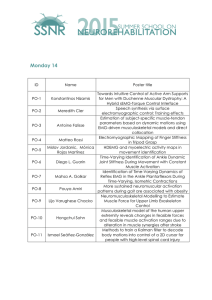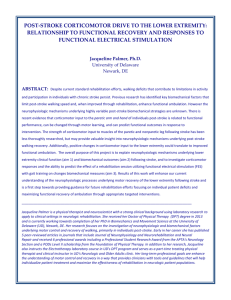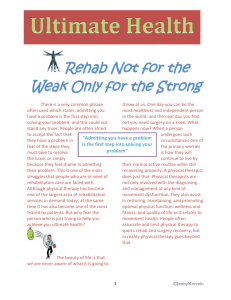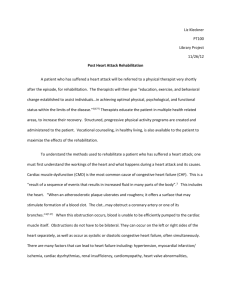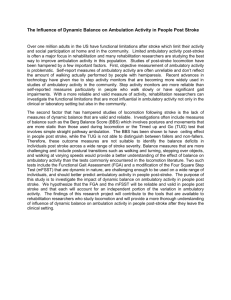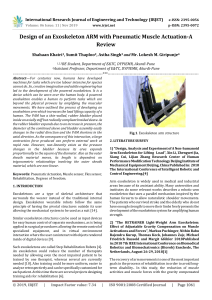Upper Limb Exoskeleton for the Rehabilitation of Post
advertisement
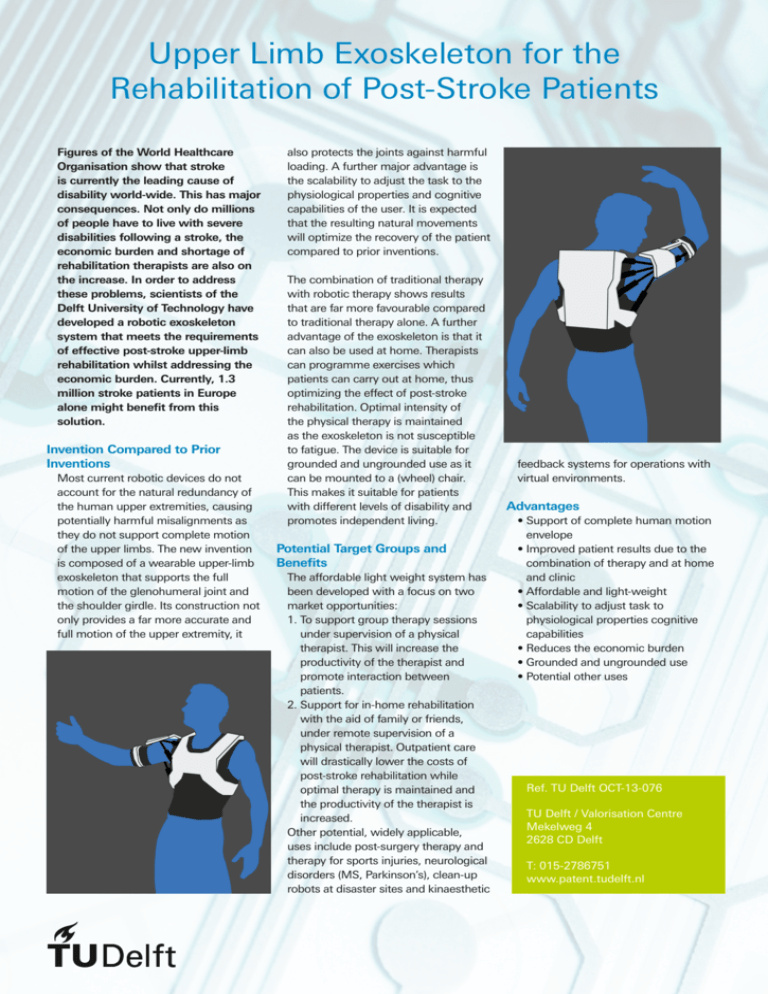
Upper Limb Exoskeleton for the Rehabilitation of Post-Stroke Patients Figures of the World Healthcare Organisation show that stroke is currently the leading cause of disability world-wide. This has major consequences. Not only do millions of people have to live with severe disabilities following a stroke, the economic burden and shortage of rehabilitation therapists are also on the increase. In order to address these problems, scientists of the Delft University of Technology have developed a robotic exoskeleton system that meets the requirements of effective post-stroke upper-limb rehabilitation whilst addressing the economic burden. Currently, 1.3 million stroke patients in Europe alone might benefit from this solution. Invention Compared to Prior Inventions Most current robotic devices do not account for the natural redundancy of the human upper extremities, causing potentially harmful misalignments as they do not support complete motion of the upper limbs. The new invention is composed of a wearable upper-limb exoskeleton that supports the full motion of the glenohumeral joint and the shoulder girdle. Its construction not only provides a far more accurate and full motion of the upper extremity, it also protects the joints against harmful loading. A further major advantage is the scalability to adjust the task to the physiological properties and cognitive capabilities of the user. It is expected that the resulting natural movements will optimize the recovery of the patient compared to prior inventions. The combination of traditional therapy with robotic therapy shows results that are far more favourable compared to traditional therapy alone. A further advantage of the exoskeleton is that it can also be used at home. Therapists can programme exercises which patients can carry out at home, thus optimizing the effect of post-stroke rehabilitation. Optimal intensity of the physical therapy is maintained as the exoskeleton is not susceptible to fatigue. The device is suitable for grounded and ungrounded use as it can be mounted to a (wheel) chair. This makes it suitable for patients with different levels of disability and promotes independent living. Potential Target Groups and Benefits The affordable light weight system has been developed with a focus on two market opportunities: 1. To support group therapy sessions under supervision of a physical therapist. This will increase the productivity of the therapist and promote interaction between patients. 2. Support for in-home rehabilitation with the aid of family or friends, under remote supervision of a physical therapist. Outpatient care will drastically lower the costs of post-stroke rehabilitation while optimal therapy is maintained and the productivity of the therapist is increased. Other potential, widely applicable, uses include post-surgery therapy and therapy for sports injuries, neurological disorders (MS, Parkinson’s), clean-up robots at disaster sites and kinaesthetic feedback systems for operations with virtual environments. Advantages • Support of complete human motion envelope • Improved patient results due to the combination of therapy and at home and clinic • Affordable and light-weight • Scalability to adjust task to physiological properties cognitive capabilities • Reduces the economic burden • Grounded and ungrounded use • Potential other uses Ref. TU Delft OCT-13-076 TU Delft / Valorisation Centre Mekelweg 4 2628 CD Delft T: 015-2786751 www.patent.tudelft.nl

